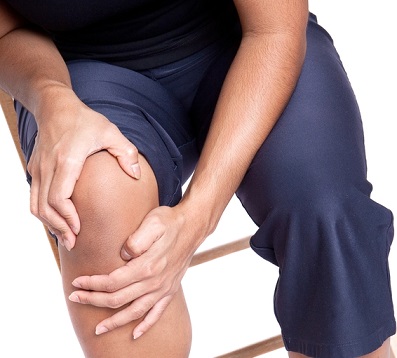 New Health Guide
New Health Guide
Many of us develop inner knee pain from time to time and the pain can sometimes be excruciating. This pain may develop gradually over a few days, or immediately following any injury to the knee or you can experience inner knee pain, running. Furthermore, because of the complex structure of the inner knee, anything could go wrong, and understanding some of the causes leading to injury is important in order to avoid and treat such injuries.

A large C-shaped cartilage on top of the lower leg (tibia) is called the medial meniscus. It provides joint stability, lubrication, force transmission and helps with shock absorption. Injury to this cartilage include knee joint ache with stiffness, swelling, catching, locking or popping,or a general feeling of instability or wobbly sensation.
One of four major ligaments of the knee is the medial collateral ligament. It is located on the inside of the knee providing stability and support to the inner knee joint. Symptoms of injury include swelling and tenderness, stiffness, and marked with sharp pain on the inner knee.
Best described as wear and tear or degeneration of the joint cartilage, knee arthritis also sometimes cause pain on inside of knee. Symptoms of knee arthritis include tenderness, deep ache, stiffness, and a general soreness along the inside of the knee joint.
Pes Anserine bursa is a small lubricating sac located between the shinbone (tibia), and the tendons of three muscles called gracilis, sartorius, and semi-tendinosus.Any injury to Pes Anserine bursa can lead to inflammation and irritation, swelling, stiffness, hot to the touch, stinging sensations, and tenderness.
Inner knee pain running can be caused by pes anserine tendonitis, which is an inflammation or irritation of the tendons located near the muscles of gracilis, sartorius, and semitendinosus. Injuries to these tendons include sharp pain, tenderness, hot to the touch, along with some swelling.
A medical disorder called gout is caused by diets too high in purine-rich foods such as animal organs, brewer's yeast, and sardines. The condition sets in rapidly, often at night and leads to pain marked by immediate redness, along with heat and swelling at the knee joint.
Infections of the knee may be caused by trauma to the knee itself, or an infection elsewhere in the body, and usually after surgery. Symptoms of an infection include redness and soreness of the knee joint, along with tenderness, swelling, and accompanied with a fever.
Also known as "joint mice", is a condition brought on when a piece of torn cartilage floats around in the knee joint. When it settles between bone, it can result in sudden and intense pain and leaves you with the inability to move the knee altogether.
When you get inner knee pain running, there're some actions you can take to help mitigate the pain. Fortunately, most people who have minor to moderate knee pain can usually expect it to resolve itself over time, and treatments are available to address some of the underlying causes. To help ensure a speedy recovery you can:
Seek medical advice if you have any of the following conditions:
If medical attention is necessary, you can expect the doctor tocarry out a physical examinationof the injury, including blood tests, and an X-ray or MRI scan. Treatment could include prescription pain killers, physiotherapy, and in some cases arthroscopic surgery that is used to have a look inside the joint in order to repair any damage that may have occurred.
To avoid any inner knee pain running, you'll want to build up your ability to run gradually. Many professionals suggest following the 10% rule to increase the amount of time or distance you run, whereas you increase your activity by up to 10% weekly. Anything more than that risks injury to your knees.
It is extremely important to prepare for a run by warming up with some stretching exercises. This loosens the muscles and helps prevent shock injury to the knees. Conversely, the wise runner will also cool down and elevate the knees while resting from a long jog around the neighborhood to help knees recover.
Choosing the right footwear will help reduce bio-mechanical issues that reduce risk of injury to the inner knees. Consider purchasing over the counter orthotics or arch supports for your running shoes to help relieve some of the strain on your knees. Remember also to purchase new running shoes regularly as the old ones become worn.
The most common cause of knee pain from running is overexertion. This happens when you push yourself beyond the limits of what your body can handle and its ability to recover. Some of the warning signs of overexertion include mood changes, depression and irritability, headaches, and pains that cause a lack of enthusiasm for exercise.
If you are experiencing knee pain running, you might want to consider a knee brace. Knee braces are combinations of foam, metal, plastic, and elastic material with straps. If you have already injured your knee, or just want to limit the amount of stress on the knees, knee braces offer a wide range of products to meet your needs.